Getting Started with Terrarium Crafting
Ready to create your own mini-ecosystem at home? Terrariums are small, enclosed gardens (think glass containers housing plants) that thrive with minimal care. You can use everyday items like a 1-quart glass jar or a 6-inch fish bowl to build one. Let’s explore 10 easy projects, starting with simple designs; each offers unique flair for your space. Stick around to uncover step-by-step guides for crafting them!
Contents
Classic Glass Jar Terrarium
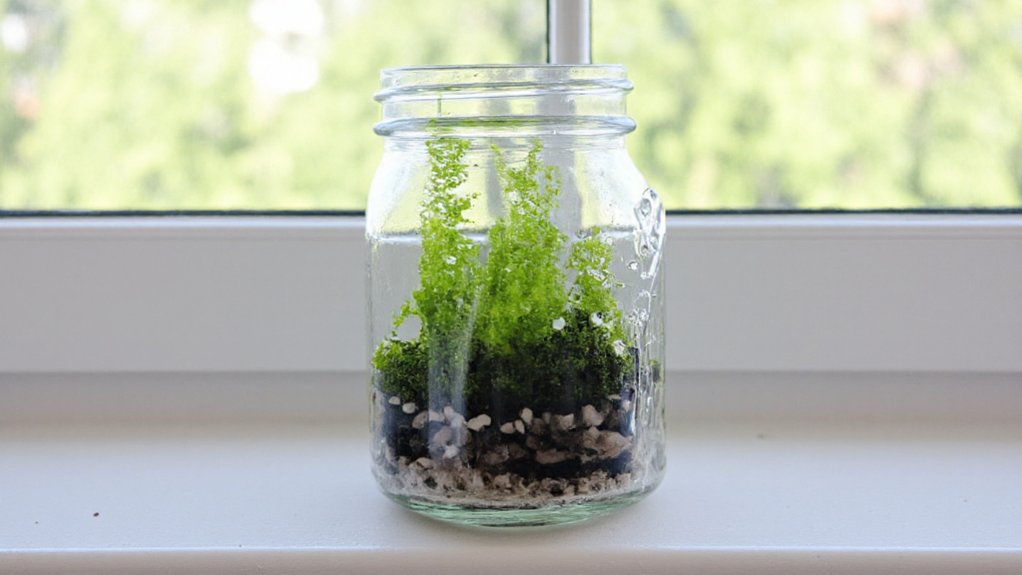
A Classic Glass Jar Terrarium is a simple and charming way to create a miniature ecosystem in your home. Using a clear glass jar with a lid, you can build a self-contained environment that requires minimal maintenance. This project is perfect for beginners, as it uses basic materials like pebbles, activated charcoal, potting soil, and small plants such as moss, ferns, or air plants that thrive in humid conditions.
To start, layer the bottom of the jar with pebbles for drainage, followed by a thin layer of activated charcoal to prevent mold and odors. Add a layer of potting soil, then carefully plant your chosen greenery, arranging them to create a balanced and visually appealing design. Seal the jar with its lid to maintain humidity, and place it in indirect sunlight. This classic terrarium not only adds a touch of nature to your space but also serves as an easy, low-cost DIY project.
Hanging Globe Terrarium
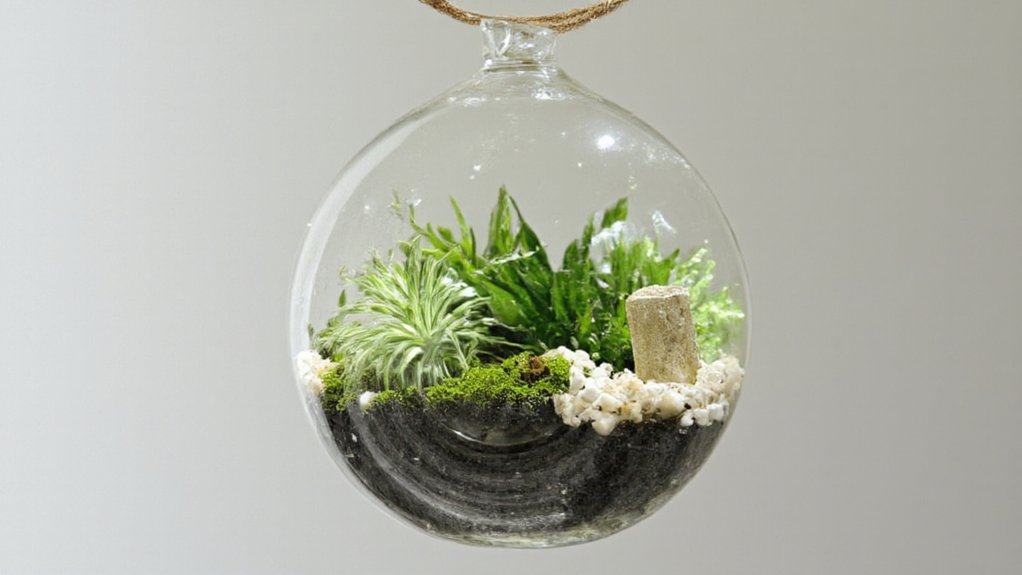
A hanging globe terrarium is a stylish and space-saving way to bring a touch of greenery into your home. These spherical glass containers are designed to be suspended from the ceiling or a stand, creating a floating garden effect that adds visual interest to any room. They are perfect for small plants like air plants, moss, or miniature ferns, and their transparent design allows you to showcase the beauty of the plants from all angles.
To create a hanging globe terrarium, start by selecting a glass orb with an opening for easy access. Add a layer of pebbles or gravel for drainage, followed by a thin layer of activated charcoal to keep the environment fresh. Then, add a substrate suitable for your chosen plants, arrange them inside, and decorate with small rocks or figurines for a personalized touch. Hang the terrarium in a spot with indirect sunlight, and maintain it by misting the plants lightly to keep them hydrated.
Mason Jar Mini Garden
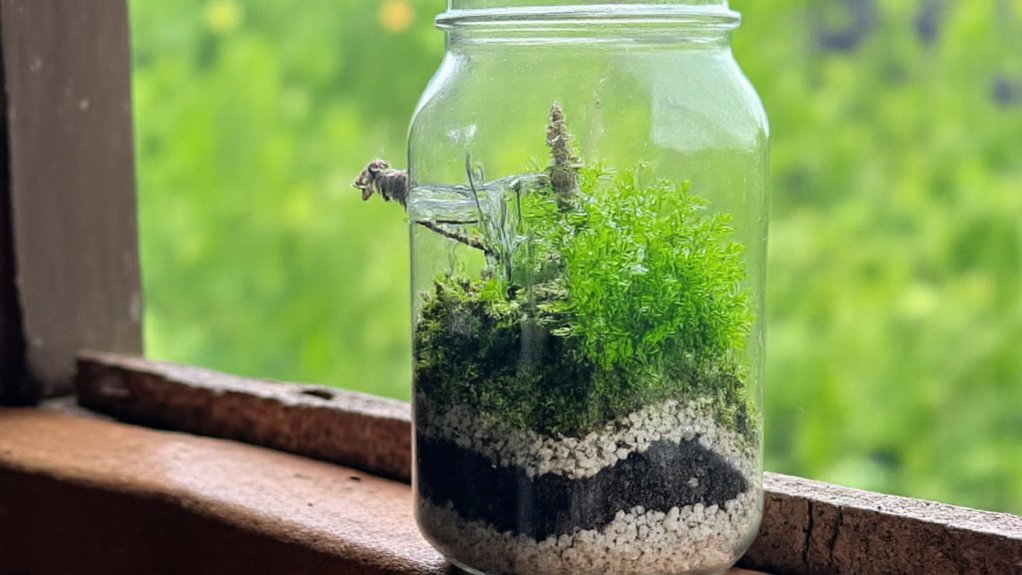
Creating a Mason Jar Mini Garden is a simple and charming way to bring a bit of nature indoors. All you need is a clean mason jar, small pebbles or gravel for drainage, potting soil, and tiny plants or moss. Start by layering the bottom of the jar with pebbles, then add a thin layer of soil, and carefully plant your chosen greenery. This setup is perfect for small spaces like a windowsill or desk, offering a low-maintenance option for plant lovers.
These mini gardens are also highly customizable, allowing you to experiment with different plant types, decorative elements like figurines, or even colored sand. They make great gifts or personal projects, as they require minimal care—just a little water every few weeks and indirect sunlight. With a Mason Jar Mini Garden, you can enjoy a tiny ecosystem that brightens up any corner of your home.
Teacup Terrarium Delight
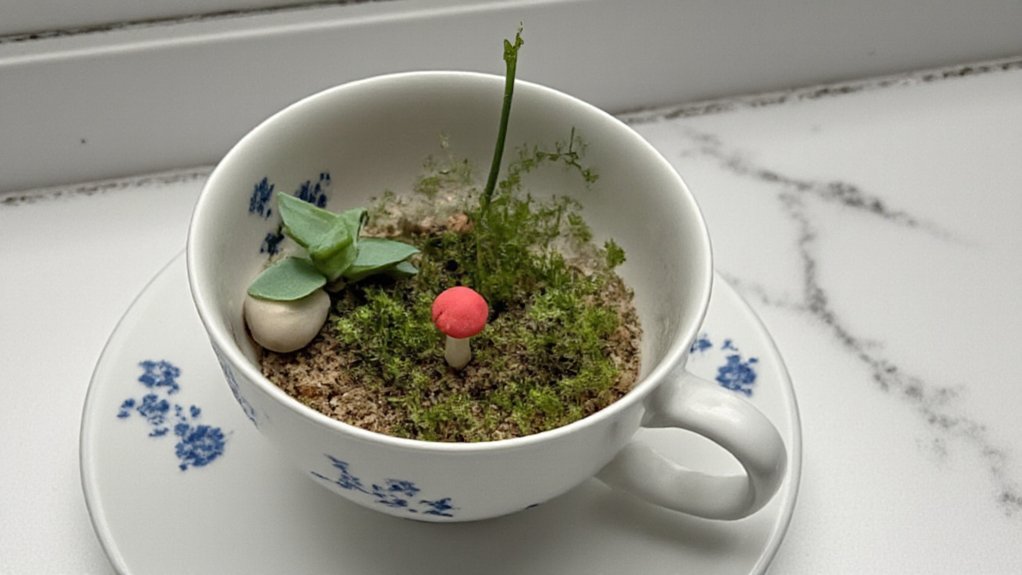
Teacup Terrarium Delight is a charming and creative way to bring a miniature garden into your home using a simple teacup as the container. This project is perfect for those with limited space or anyone looking to add a touch of greenery to their desk, windowsill, or shelf. By repurposing a delicate teacup, you can create a tiny ecosystem that requires minimal maintenance while offering a whimsical aesthetic.
To make a teacup terrarium, start with a clean, dry teacup and layer the bottom with small pebbles or gravel for drainage. Add a thin layer of activated charcoal to keep the environment fresh, followed by a layer of potting soil. Choose small plants like moss, air plants, or miniature ferns that thrive in confined spaces, and arrange them carefully within the cup. Finish with decorative elements like tiny figurines or stones to enhance the fairy-tale vibe of your mini garden.
Geometric Glass Container Design

Geometric glass containers are a stylish and modern choice for terrarium designs, offering a unique aesthetic with their sharp angles and clean lines. These containers, often shaped as hexagons, pentagons, or cubes, provide a contemporary look that can elevate the visual appeal of any indoor space. They are typically made of clear glass with metal or wooden frames, allowing for maximum visibility of the plants and decor inside.
These designs are ideal for showcasing small succulents, air plants, or moss, as their structured shape creates a striking contrast with the organic forms of the greenery. Geometric glass containers often come with a hinged lid or an open side for easy access, making them practical for maintenance while adding a touch of sophistication to your terrarium project.
Vintage Bottle Terrarium
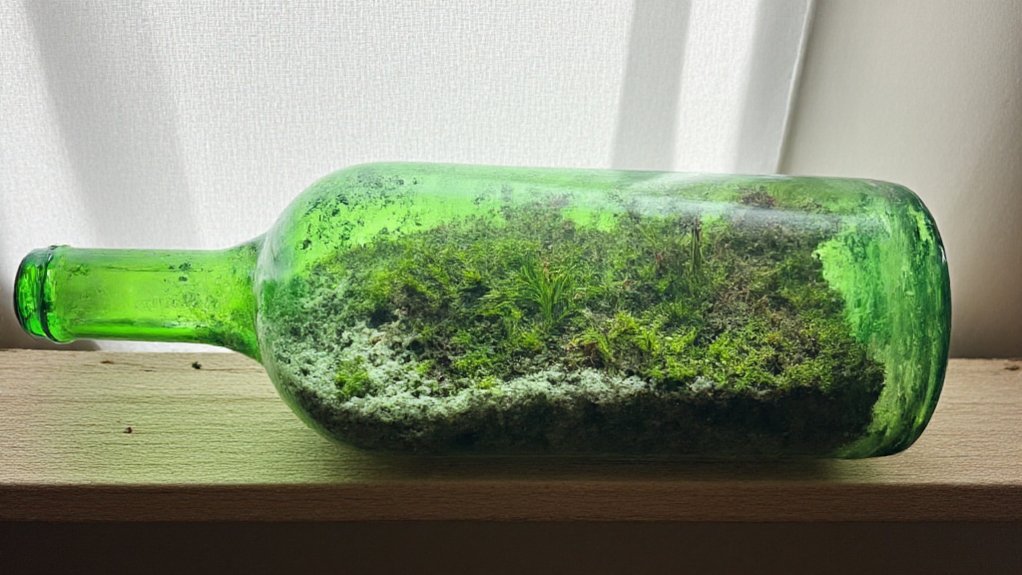
A Vintage Bottle Terrarium is a charming and creative way to bring a miniature garden into your home using repurposed glass bottles. This project involves selecting an old, clear glass bottle with a narrow neck or a wider opening, depending on the design you prefer, and transforming it into a tiny ecosystem for small plants like moss, ferns, or air plants.
To create this terrarium, start by cleaning the bottle thoroughly and adding layers of pebbles or gravel for drainage, followed by a thin layer of activated charcoal to keep the environment fresh. Then, add a layer of potting soil suitable for your chosen plants, and carefully plant them using a spoon or small tool to maneuver through the bottle’s opening. Seal the bottle with a cork or lid if desired, and place it in indirect sunlight to maintain the delicate balance of moisture and warmth inside.
Wooden Box Green Haven
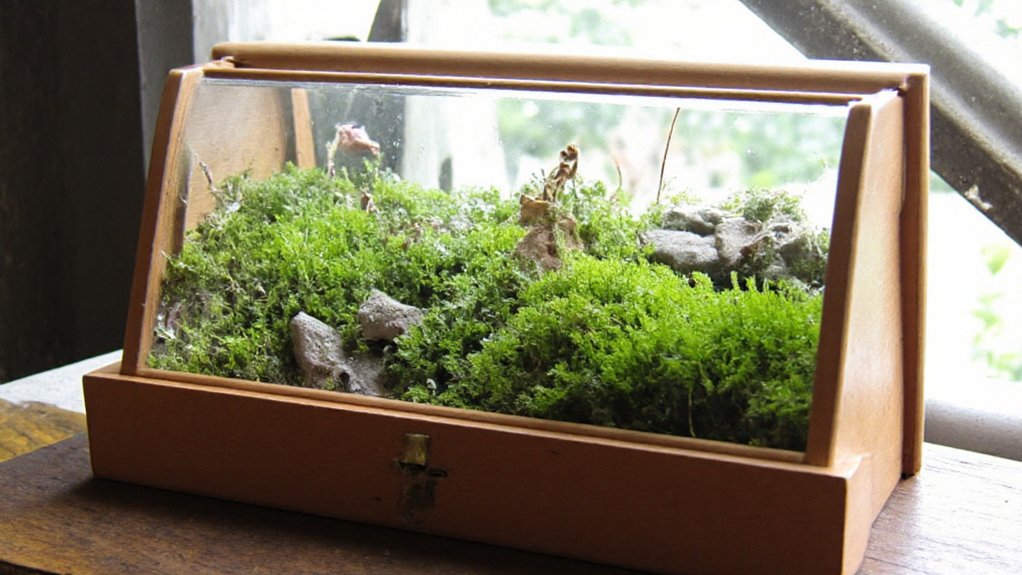
The Wooden Box Green Haven is a charming and rustic terrarium project that transforms a simple wooden box into a thriving miniature ecosystem. This project is perfect for those who appreciate a natural, earthy aesthetic, as the wooden box provides a sturdy and visually appealing frame for your terrarium. It’s an ideal choice for displaying small plants like mosses, ferns, or air plants, and can be customized with decorative elements such as pebbles, driftwood, or tiny figurines to create a personalized green space.
To create this haven, start by selecting a wooden box with a glass lid or panel to allow light in while maintaining humidity. Line the box with a waterproof material to prevent leaks, then layer it with drainage materials like gravel, followed by a barrier such as sphagnum moss, and finally, potting soil suitable for your chosen plants. Arrange your plants and decorations thoughtfully, ensuring they have enough space to grow, and place the terrarium in a spot with indirect sunlight to keep your miniature garden flourishing.
Fish Bowl Plant World
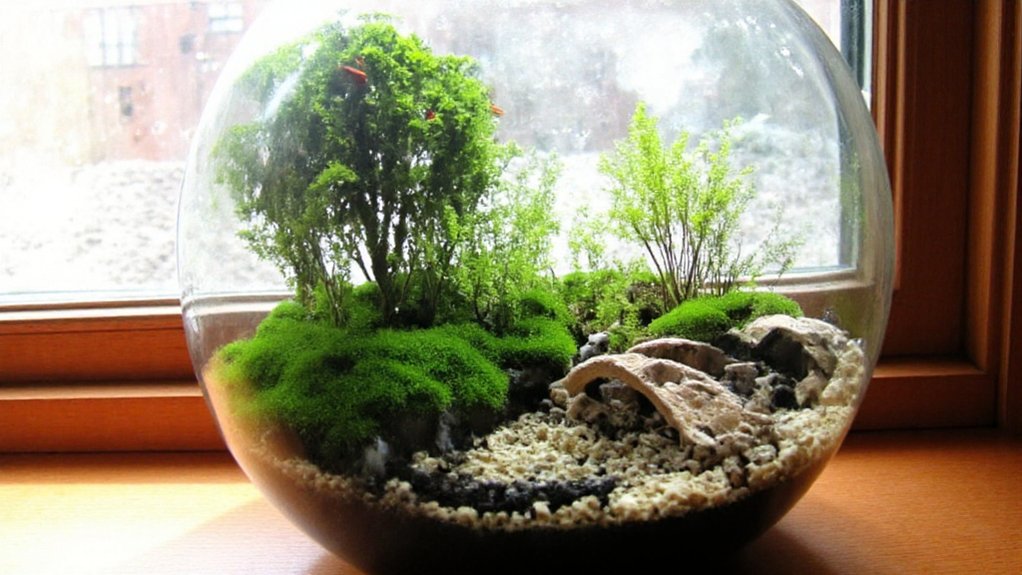
Creating a Fish Bowl Plant World is a simple and charming way to bring a miniature ecosystem into your home. Using a clear glass fish bowl, you can craft a small terrarium that houses a variety of tiny plants, such as mosses, air plants, or small ferns. Start by layering the bottom with pebbles or gravel for drainage, followed by a thin layer of activated charcoal to keep the environment fresh, and then add a substrate like potting soil or sphagnum moss to support plant growth.
Select plants that thrive in humid, enclosed environments and arrange them creatively within the bowl, leaving space for air circulation. You can enhance the visual appeal by adding small decorative elements like figurines, rocks, or driftwood to mimic a natural landscape. Place the fish bowl in indirect sunlight and mist the plants occasionally to maintain moisture, ensuring your tiny plant world remains vibrant and healthy.
Layered Sand and Succulent Display
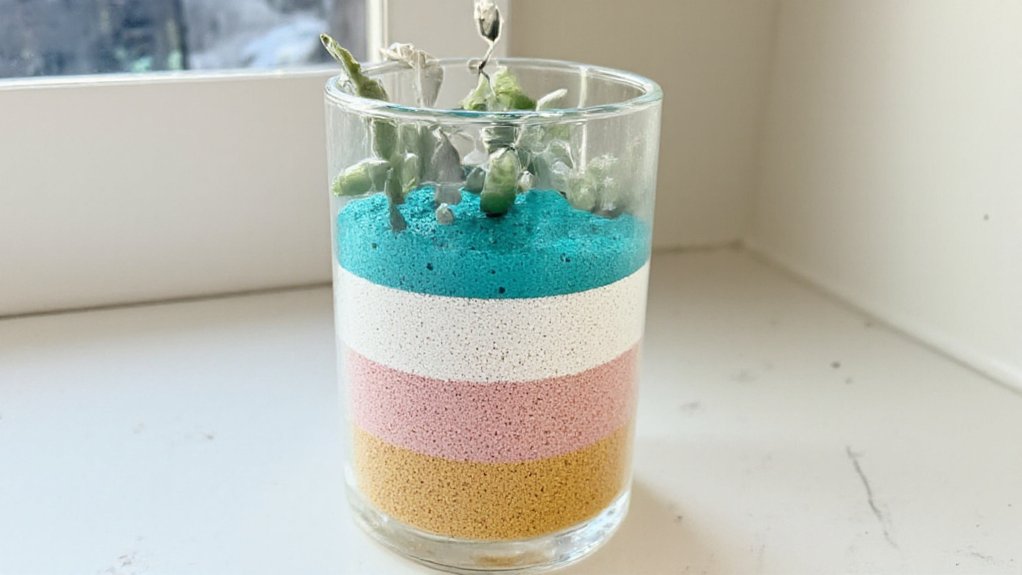
The Layered Sand and Succulent Display is a visually striking terrarium project that combines colorful layers of sand with the natural beauty of succulents. To create this display, start with a clear glass container and add alternating layers of colored sand, creating a gradient or pattern that suits your style. Once the sand layers are complete, carefully plant small succulents on top, ensuring their roots are nestled into a thin layer of potting mix or directly into the sand if they are hardy varieties.
This project is perfect for beginners due to its simplicity and minimal maintenance requirements. Succulents thrive in well-drained environments, making sand an ideal medium, and the layered design adds a decorative touch to any space. Just place the terrarium in a spot with indirect sunlight and water sparingly to keep the succulents healthy.
Repurposed Light Bulb Terrarium

Creating a repurposed light bulb terrarium is a unique and creative way to bring a miniature garden into your home. Start by carefully hollowing out an old incandescent light bulb, removing the inner filament and metal components through the base with pliers or a screwdriver, while wearing protective gloves and eyewear for safety. Once the bulb is empty and cleaned, it becomes a tiny glass enclosure perfect for small plants or moss.
Fill the bulb with a layer of pebbles for drainage, followed by a thin layer of activated charcoal to keep the environment fresh, and then add a small amount of potting soil or sphagnum moss. Plant tiny air plants, moss, or miniature ferns inside using tweezers for precision, and add decorative elements like small rocks or figurines if desired. Seal the base with a cork or silicone stopper to maintain humidity, and hang or display the bulb in a well-lit area, ensuring it gets indirect sunlight to thrive.
